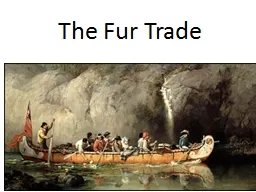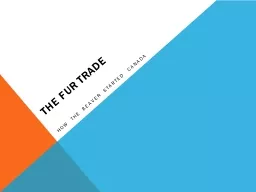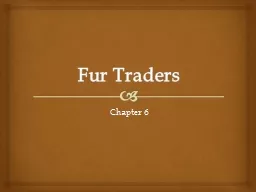PPT-Chapter 4: The Fur Trade
Author : cheryl-pisano | Published Date : 2016-04-27
The growing economy in Canada as a result of the fur trade brought both the French and the British together Sometimes this could result in violent conflict over
Presentation Embed Code
Download Presentation
Download Presentation The PPT/PDF document "Chapter 4: The Fur Trade" is the property of its rightful owner. Permission is granted to download and print the materials on this website for personal, non-commercial use only, and to display it on your personal computer provided you do not modify the materials and that you retain all copyright notices contained in the materials. By downloading content from our website, you accept the terms of this agreement.
Chapter 4: The Fur Trade: Transcript
Download Rules Of Document
"Chapter 4: The Fur Trade"The content belongs to its owner. You may download and print it for personal use, without modification, and keep all copyright notices. By downloading, you agree to these terms.
Related Documents














